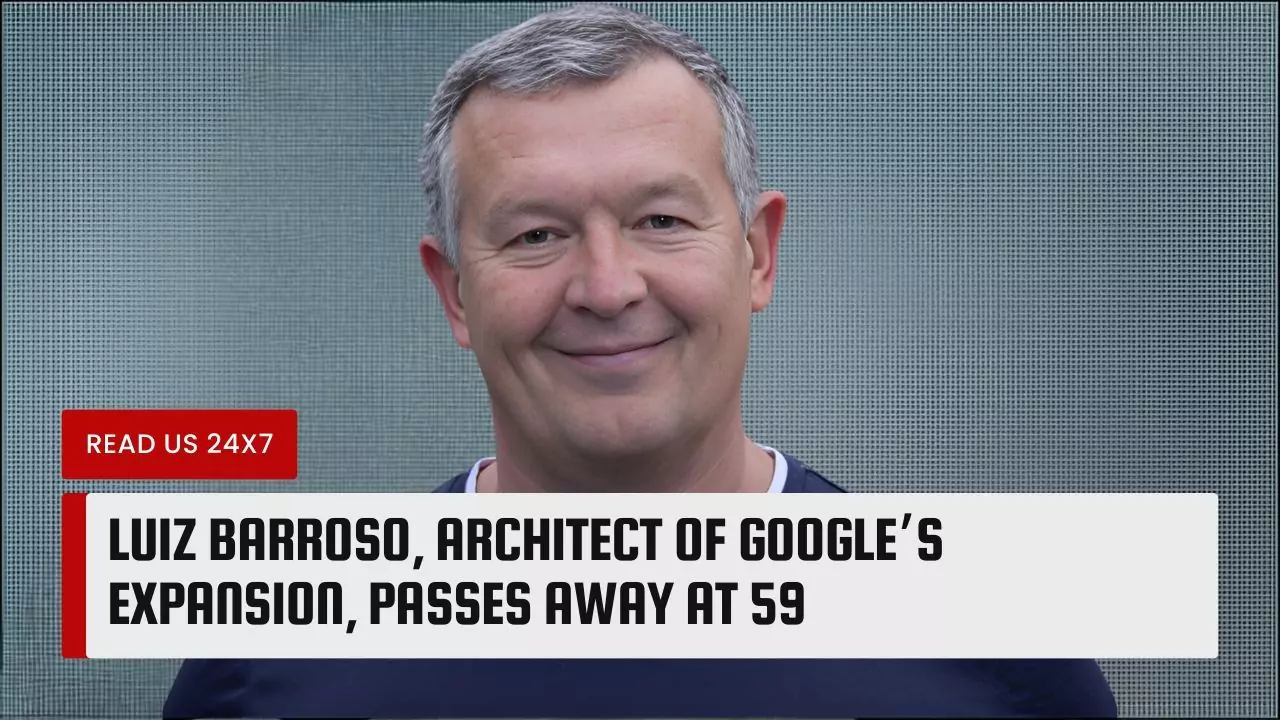Luiz Barroso, a Brazilian computer engineer who pioneered the design of the modern data center, died on September 16, 2023, at the age of 59. He was a veteran engineer at Google, where he led the development of the computing infrastructure that powers the company’s services and products. He also contributed to public health initiatives such as Bluetooth contact tracing and data center optimization. He was widely respected and admired by his peers and colleagues for his vision, innovation, and leadership.
The Life and Career of Luiz Barroso
Barroso was born in Rio de Janeiro in 1964. He showed an early interest in science and technology and excelled in mathematics and physics. He earned his bachelor’s degree in electrical engineering from the Pontifícia Universidade Católica in Rio de Janeiro and his master’s degree in computer engineering from the University of Southern California. He also published several papers on topics such as parallel computing, distributed systems, and network architectures.
Barroso worked for Digital Equipment Corporation (DEC) from 1990 to 2001, where he designed the first multi-core CPU and developed several innovative technologies for high-performance computing. He joined Google in 2001 as a senior engineer on the data center team. He was responsible for overseeing the design, construction, operation, and maintenance of Google’s massive data centers around the world.
Barroso is credited with transforming Google’s data centers into efficient and sustainable systems that can handle massive amounts of data and serve millions of users simultaneously. He introduced concepts such as “warehouse” computing, which involves storing data close to where it is needed rather than distributing it across multiple locations; “cold” storage, which involves using low-cost hard disk drives instead of expensive solid state drives; “hot” storage, which involves using solid state drives with high capacity but low speed; “warm” storage, which involves using solid state drives with low capacity but high speed; “cool” storage, which involves using liquid cooling systems to reduce energy consumption; “green” energy sources such as solar panels or wind turbines to power the data centers; “smart” sensors and software to monitor and optimize the performance of the data centers; and “cloud-native” applications that can run on any platform or device without requiring any changes.
Barroso also helped shape Google’s culture of innovation and collaboration by fostering a team environment where engineers could share ideas, experiment with new technologies, learn from failures, and celebrate successes. He mentored many young engineers who went on to become leaders in their own fields. He also collaborated with other researchers and organizations to advance the state-of-the-art in data center technology.
Impact of Barroso’s Work at Google
Barroso’s work at Google had a significant impact on both the company itself and the broader industry. His innovations enabled Google to scale up its operations without compromising its quality or reliability. His designs also reduced Google’s environmental footprint by lowering its energy consumption and carbon emissions. His contributions also inspired other companies to adopt similar practices or develop their own solutions for cloud computing.
Some of the ways that Barroso’s work impacted Google and the industry are:
Expansion Of Google’s Reach And Capabilities
Barroso’s data center design allowed Google to offer a wide range of services and products to its users, such as search, email, maps, photos, videos, cloud computing, artificial intelligence, machine learning, etc. He also enabled Google to expand its presence in different regions and markets, such as Asia, Africa, and Latin America, by building data centers that could operate in diverse climates and conditions. He also supported Google’s philanthropic and social initiatives, such as providing free internet access to remote areas, donating computing resources to researchers and educators, and promoting digital literacy and inclusion.
Influence On Data Center Industry
Barroso’s data center design set a new standard for the industry, as it demonstrated how to achieve high performance, efficiency, and scalability with low-cost and low-power components. He also shared his insights and best practices with the public through publications, presentations, and collaborations. He influenced the development of new technologies and standards for data center architecture, such as the Open Compute Project, which aims to create open and customizable hardware and software for data centers. He also encouraged the adoption of renewable energy sources and green computing practices for data centers, such as using waste heat for heating or cooling, recycling water, and reducing waste.
Use Of Low-Cost Components For Efficient And Sustainable Design
Barroso’s data center design relied on using low-cost components, such as commodity servers, hard disk drives, and network switches, rather than expensive and specialized hardware, such as mainframes, solid state drives, and optical fibers. He also used software and algorithms to optimize the performance and reliability of these components, such as load balancing, fault tolerance, replication, compression, encryption, etc. He also used liquid cooling systems to reduce the power consumption and heat generation of these components, as well as to extend their lifespan. He also used solar panels or wind turbines to power the data centers, as well as batteries or fuel cells to store the excess energy.
Tributes and Obituaries for Luiz Barroso
Barroso’s death was met with grief and sadness by his family, friends, colleagues, and admirers. He was remembered as a brilliant engineer, a visionary leader, a generous mentor, and a kind person. He was also praised for his contributions to the field of computer science, the industry of cloud computing, and the society at large.
Google announced Barroso’s passing on its official blog, expressing its condolences and gratitude to his family and colleagues. Google also highlighted Barroso’s achievements and legacy at the company, and how he helped shape Google’s culture and values. Google also dedicated a special doodle to Barroso on its homepage, featuring his portrait and some of his inventions. Google also created a memorial website for Barroso, where people could share their memories and messages about him.



